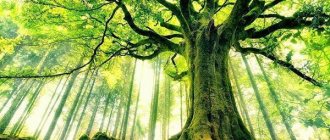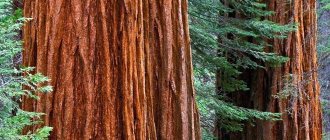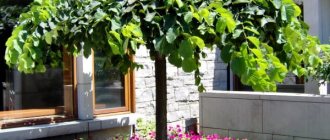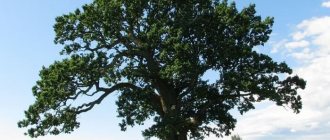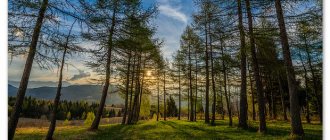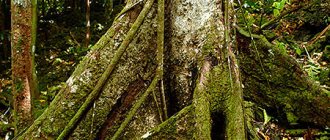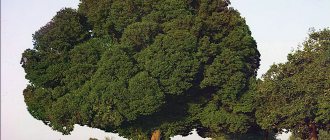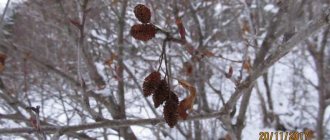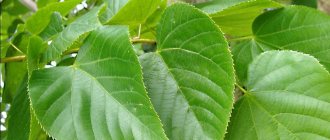Roman Levykin is a specialist in working with anxiety, depression, the consequences of mental trauma, conflicts, addiction and codependency in relationships. Special psychologist, clinical psychologist, psychodynamic psychotherapist, St. Petersburg. Training psychotherapist of the International Society of Catathymic Experience of Images (ISKPO), member of the ACPP. Two higher psychological educations. Additional training in the field of Gestalt approach and catathymic-imaginative psychotherapy. Participant in international educational programs of the world's leading psychoanalysts. 15 years of practice. Read more…
“My goal is to help people become happier and more whole.”
I provide individual consultations in this office Sign up for a consultation
What is a tree and its structure
Trees are a form of woody plant consisting of a root, trunk and crown. In 2015, there were three trillion trees on our planet. Russia ranks first in terms of their number - 640 billion. But every year due to climate change and deforestation, their number is decreasing.
A tree consists of a trunk, crown and roots (Appendix 1). The roots of a tree are its foundation. They feed the tree by absorbing nutrients dissolved in the water and also keep it upright. The larger the tree, the richer its root system.
The trunk of a tree is like its body. All substances extracted by the roots pass upward along the trunk, and branches begin to extend from the trunk. It is important to note that a real tree has one trunk, but shrubs have several, even large, trunks.
Tree branches provide support for leaves; it is on the branches that buds are formed, from which leaves and flowers then appear. Nutrients also pass through them. Over time, the branches become wider and harder (woody), and new branches appear from them.
The foliage of a tree is an organ that allows the tree to exchange substances with the environment. Thanks to the leaves, the tree absorbs carbon dioxide, which is harmful to humans, from the air, here organic substances are formed from it under the influence of sunlight, and through the leaves the tree releases the oxygen that we breathe.
All the leaves and branches of the tree form its crown - a lush cap that provides shade and shelters us from the rain.
Translation of tree
We offer you a translation of the word tree into English, German and French. Implemented using the Yandex.Dictionary service
- To English
- To German
- To French
- tree
- wood fruit tree - fruit tree - black wood
- dark wood
- wooden house
- gazebo
- Baum
- wood, tree trunk, lonely tree - einsamer Baum - solid wood – aus massivem Holz
- arbre
- tree, tree-like structure, wood of fruit trees - arbres fruitiers - directory tree - arborescence des répertoires
- wood carving – gravure sur bois
Types of trees
Trees are divided into:
- conifers are pines, spruces, fir, larches, etc. (they have coniferous leaves in the form of needles),
- broad-leaved - beech, birch, ash, maple, etc. (they have wide and flat leaves).
- In addition, according to the lifespan of leaves, trees are also divided into:
- evergreen (i.e. those trees that remain green all year round, for example, a Christmas tree),
- deciduous (i.e. trees whose leaves fall, such as maple)
Trees are also divided into:
- fruit trees are those trees that grow in our gardens (for example, apple, cherry, plum);
- valuable are those trees whose wood is used in production;
- ship trees are those trees whose wood is used in shipbuilding, tropical, northern.
Chemical protection tree
—- The sun rises higher, shines stronger and warms up well during the day, despite the fact that the frosts are still crackling at night. Such temperature changes cause damage to the bark and wood - sunburn and frost damage. To help our pets, they need to be whitened, and the higher the better. If there is no snow, you can also lighten the ground in the projection of the crown. Whitewashing is best done with a sprayer, using lime with a small addition of copper sulfate. In spring, the bark darkens, the moist soil is also quite dark, and warms up well. The soil can be mulched, then the earth will not overheat, the growing season of the root system will begin later and we will escape the harmful effects of frost. It is also better to stock up on plant protection products for summer treatments early, because at the last second (according to the law of the sandwich) they may simply not be on sale. Against mildew in the vineyard, scab and moniliosis in fruit trees, we alternate contact and systemic preparations. In recent years, we have become increasingly concerned about ticks, against which we should also have something in stock, because you can’t find good drugs right away. Do not spare money on a good sprayer - a lot depends on it. We have experienced more than one. The sprayer must produce a uniform fine spray, operate reliably, be easy to maintain, provide low product consumption and high productivity. We settled on the Solo motorized sprayer. It works like an aerosol generator, does not clog, is easy to maintain and allows you to process the entire area in a couple of hours, which suits us quite well. During the growing season, we fertilize mainly with the same sprayer - foliar, on the leaf, sometimes combining them with chemical treatments: clean, fast, economical. Only when replanting plantings do we apply phosphorus fertilizers - our soils have a large deficiency of this element.
Tallest trees in the world
When the crowns of forest trees close overhead, every person, at least for a moment, realizes the full power of nature, which is expressed in the enormous size of the trees. The largest types of trees enhance this feeling. It is worth considering the largest and most majestic varieties of these in order to see firsthand the greatness of the ancient forests that have survived on the planet to this day, and, of course, need protection.
In the historical past, forests were even taller, and a number of plants were significantly larger than their descendants. Some of the giant plants of the past are present in forests today, it is worth talking about this in more detail.
Globular eucalyptus (Appendix 3). Eucalyptus trees are not the tallest trees in the world, but they gain their first meters very quickly. By the age of 10, these are already fully grown and mature plants with a height of 20-25 meters, the diameter of the trunk of such a plant reaches a meter. These are tropical plants that live mainly in the Southern Hemisphere; in the wild they are present on the New Zealand islands, Oceania and Australia, there are more than 700 species. But it is the globular eucalyptus that turns out to be the largest in practice.
Baobab (Appendix 3) is an African plant recognizable by its appearance, which is ideally suited for living and thriving in the dry climate of the hot continent. The height of the tree ranges from 18 meters, mature trees grow to 22-25 meters. The girth of their trunks can be up to 8 meters! However, the volume of the tree varies depending on the season. In summer, the foliage is shed and the volume decreases - nature does everything necessary to retain moisture in the heat.
Determining the age of such plants is problematic, because they do not form annual rings, like other trees. However, the radiocarbon method made it possible to clarify that the tree with a trunk girth of 4.5 meters is 4500 years old. So these plants, with their slow maturation and growth, turn out to be very ancient.
Mexican cypress (Appendix 3). The same plant is sometimes referred to as Portuguese or Louisiana cypress. Its height is 30-40 meters, the crown shape is pyramidal, the crown is dense. The Mexican cypress is considered one of the most beautiful tree species on the planet. It can have an impressive trunk thickness, in this regard it sometimes breaks all records. So, in the 19th century, one of the thickest trunks was measured, and the girth was equal to 17 meters. The check showed that the tree is 400 years old.
The green lungs of our planet
In one warm sunny day, a hectare of forest absorbs 220–280 kg of carbon dioxide from the air and releases 180–200 kg of oxygen. One hectare of coniferous trees retains up to 40 tons of dust per year, and deciduous trees up to 100 tons.
The unique ability of trees to produce the oxygen necessary for the existence of living organisms gives ecologists and environmentalists the right to call trees the lungs of the planet (Appendix 4). We should take all possible measures to expand the area of green spaces. The fact is that in the modern era the role of plants in cleaning the natural environment from toxic impurities emitted by transport, plants, and factories has increased very sharply.
As human civilization develops, population increases, requirements for environmental quality, needs for clean water, air and similar benefits provided by forests, the environment-forming importance of forests in the life of mankind increases. And most importantly, simple awareness of this role is gradually, albeit very slowly, replaced by
Fortunately, there are still huge forests on Earth that are natural carbon dioxide sinks. Our country is often called a great forest power. Indeed, the forest zone occupies more than half of the territory of Russia.
Walking in the forest
Why is it useful to walk in the forest? This is what I want to understand. It turns out there are many reasons why you should choose to walk in the woods.
Here are some of them:
1. Strong immunity . The results of a study conducted in Japan showed that walking in the forest activates the production of immune killer cells that destroy viral infections. Since then, forest therapy has become a common practice in Japan. And in Canada, there are even certified guides who, for just $50, can not only take a tour of the forest, but also suggest special exercises, for example, hear the rustling of leaves, see the beauty of tree bark...
2. Clean air. Forest air is one of the most powerful (and free) health benefits available to humans. Thanks to the fact that plants secrete phytoncides, biologically active substances that kill pathogenic bacteria, breathing in the forest is easy and free. Scientists say that the most phytoncides are released in the summer, in sunny weather, at noon.
Least of all - in winter, in cloudy weather and at night. From here, we can conclude when exactly is the best time to take walks in the forest. As for the benefits of clean air for humans, it strengthens the nervous system, improves mood, stimulates the functioning of all vital systems of the body - in general, in order to describe all the advantages, you need to write a separate article.
3. Energy renewal. Since ancient times, our ancestors believed that trees have special, almost magical properties. It was believed that birch stores the energy of the Sun and contributes to the awakening of a person on an energetic level. Pine removes negativity from a person, oak strengthens willpower, helps a person cope with difficulties more easily. Therefore, if you are close to the esoteric, read about the reputation of trees - they really are a powerful source of energy.
4. Calmness. In times of the ubiquitous Internet and gadgets, a person can rarely boast of spending a weekend in nature rather than in front of a computer monitor. Endlessly scrolling through social media feeds turns people into zombies, but the forest with all its biological diversity can practically open up a new world and help take your mind off the daily hustle and bustle. Trees have a positive effect not only on the physical body, but also on the psychological state, helping to calm the nerves and relieve stress. It has been proven that people who regularly spend time in the forest or parks are less likely to suffer from depression.
Pruning a mature tree
—- If the moment was missed and the tree grew, say, like a folded umbrella, you shouldn’t think that everything is lost and it’s easier to start a new one or cut it to a stump. A “failed” tree can be corrected. To turn the “stupid” green mass into regularly fruiting exemplary branches, you need to bend them down and secure them with guy wires. This method of education is well understood by young, healthy branches up to 6-7 cm thick. In order not to accidentally break them, a stretcher can be tied to the very end of the branch or even a small weight can be attached to it, which, gradually lowering down, will bend it slowly but accurately. At the bend, the buds will wake up and give life to young shoots. Which of them should be removed and which should be left will be seen in the fall.
Thicker branches can only be bent after sawing. The undercuts are made to a depth of no more than half the diameter of the branch every 2 cm. After this, the branch bends easily and is again tied to a guy wire or even two (if there is a danger that the wind will sway the branch).
A very long branch can be shortened. The undercuts must be lubricated with garden varnish. To prevent the ropes from cutting into the bark, you need to put something under them. Fedor Ryabinin uses worn sandpaper on a fabric basis for this. Of the two competing branches extending at an acute angle, located end to end, you need to leave one and cut the second into a ring. Otherwise, one of them may subsequently break off under the load of fruit.
edged board, edged board buy, buy edged board, edged board price, edged board cost, edged board sale
—- It has been proven that long forest walks have a better effect on our body than any medicine.
During this kind of therapeutic procedure, a person receives a charge of vigor and good mood, inhales healing phytoncides, calms down, forgetting about stress and depression, and with regular contact with certain trees, he can even get rid of serious ailments. Don't miss this opportunity. In spring, when nature awakens, go to the forest more often. Your name: Your e-mail (for reply): Your message:
Trees are healers
Birch is one of the most beautiful trees on the planet. The white graceful trunk creates a feeling of extraordinary gentle light emanating from this tree. Despite the fact that it grows in both Scandinavia and Europe, the white-trunked birch has long been a symbol of Russia.
In the old days they said: “Birch is a wayward and capricious tree. She doesn’t welcome every person, she doesn’t help everyone. But if she loves someone, he should be happy and successful in everything.” Birch is a tree that stays awake all day. She falls asleep just before dawn. As the first roosters crow, the birch tree plunges into a sweet and deep sleep for 2 hours so that, waking up at dawn, it can give the world its pure strength. Her sleep period occurs at approximately 3-5 am, and her peak alertness is at 6-9 am.
In general, there has always been a special attitude towards birch in Russia. They took care of it, looked after it, specially planted it, trying to “ring” the village with a protective belt of birch trees. It has long been believed that in May, birch has the greatest healing power. Therefore, from May 1 to May 12, its juice was collected and given to sick, sick and weak people to drink so that they would quickly recover and gain strength. To prevent the tree from becoming weak, no more than 1 liter of sap was collected from each birch, the wound was carefully covered, and the tree was thanked for its help. This tree was not touched again for a year. In May, half-bloomed birch buds were collected for medicinal purposes.
Scots pine is a coniferous evergreen tree of the pine family (Pinaceae), up to 50 m high. Lives up to 350-400 years. Grows on sandy, sandy loam, podzolic, turf, gley and peat-bog soils. An ancient Greek legend claims that the plant got its name from the nymph Pitis. Pitis was very fond of the cheerful and mischievous god Pan, the patron saint of fishermen and hunters. And Boreas, the god of the cold north wind, was just as jealous of her. Out of jealousy, he transformed the nymph into a beautiful evergreen tree, called Pinus.
And Pan was often depicted with a pine wreath on his head. Pine is one of the oldest medicinal plants. In Ancient Egypt, pine resin was included in embalming compositions. It has been proven that these compounds still (after 3000 years) have not lost their bactericidal properties. In Greece and Rome, pine was used to treat colds. In Rus', it was customary to chew pine resin to strengthen teeth, gums, and to disinfect the oral cavity. Needles can be collected at any time of the year, but it is best in late autumn and winter, when it contains the greatest amount of ascorbic acid and essential oil.
Pine is a wonderful natural doctor. Unopened spring pine buds and pine needles are used for medicinal purposes. They contain essential oil, resins, starch, tannins, vitamins C, B, K, P, and carotene. A decoction of pine buds acts as an expectorant. In addition, pine buds have a hemostatic, anti-inflammatory, and disinfectant effect. Preparations made from pine needles have antimicrobial, disinfectant, and analgesic properties.
Decoction, infusion and tincture of pine buds are taken orally for bronchitis, pneumonia, peptic ulcers, kidney and cholelithiasis. Pine buds contain a large amount of resin, essential oil, mineral salts, vitamins C and K. In folk medicine, a decoction of pine buds is used for old rashes, chronic bronchitis, dropsy, rheumatism; the vapor of an aqueous decoction of the buds is used for inhalation. Sometimes alcohol tincture of kidneys is used as an anti-tuberculosis agent.
Pine branches are rich in ascorbic acid and are recommended for preparing vitamin drinks. For this purpose, pine needles are usually collected from branches whose thickness does not exceed 3-4 mm. Pine needles are harvested for future use only in winter; they are stored for 2-3 months. The needles are thoroughly washed with cold boiled water and chopped using scissors. 4 cups of crushed pine needles are poured into an enamel bowl, poured with 3 cups of cold water, slightly acidified with vinegar. Cover the dish with a lid and leave for 2-3 days in a dark place, shaking the dish occasionally. After this period, the composition is filtered through two layers of gauze, squeezed out and drunk 1/2-1 glass per day. Store the infusion for no more than 12 hours in a cool, dark place. To improve the taste, you can add a little sugar or honey.
Horse chestnut, wild chestnut, is a deciduous tree of the chestnut family (Hippocastanaceae), up to 30 m or more in height, with a dense spreading crown. The homeland of the common horse chestnut is the south of the Balkan Peninsula. In Europe in culture since the 16th century. For medicinal purposes, ripe seeds (fruits), bark, flowers and leaves of chestnut are used. Horse chestnut seeds, cleared of pericarp, are dried, scattered in a layer up to 5 cm thick, on racks. Drying usually lasts 3-4 weeks.
In dryers at a temperature of 40-60°C, their drying is completed in 2-3 days. The shelf life of raw materials is 2 years. The taste of the raw material is astringent. In the form of a decoction or infusion, chestnut is used in folk medicine as a hemostatic agent for internal bleeding. The cotyledons of the fruit are fleshy, light cream, rich in starch (up to 62%), sugars (up to 17%), proteins (up to 60%), contain fats (2-2.5%), organic acids, vitamins, enzymes. Unripe chestnuts are rich in vitamin C (up to 1500 mg%). Wood, bark, buds and leaves contain 10-16% tannins.
Chestnut nuts (unlike horse nuts) are very tasty, especially fried or candied; They are also consumed raw or boiled, processed into flour, coffee drink, alcohol, etc. Chestnuts are a valuable food and flavor product. Unfortunately, they cannot be stored for long periods of time and quickly deteriorate. A decoction of dry nuts and an infusion of leaves are recommended for inflammatory diseases of the upper respiratory tract, and fresh leaves are an excellent remedy for whooping cough.
Chestnut fruits and bark can be used for diseases of the gastrointestinal tract, edema associated with kidney disease, and nosebleeds. In folk medicine, a decoction or infusion of plant parts containing tannins is used as an astringent, wound-healing and anti-burn agent. Horse chestnut is also used in folk medicine. An infusion of its bark, flowers and seeds is used as an antipyretic and astringent, as well as for the treatment of various rheumatic diseases.
One of the Greek legends talks about how poplars appeared on Earth. Phaeton (the son of the Sun god), in order to prove his divine origin, decided to ride across the sky in Helios’s chariot, but could not cope with the team, which, sweeping away everything in its path, rushed from the sky to Earth. Zeus struck the chariot with lightning and smashed it to prevent all life on Earth from dying.
The phaeton died in the waves of the river. Phaethon's sisters mourned immensely, and the Sun did not shine that day. The gods took pity on the grief of the sisters and turned them into slender trees sacred to the Greeks - poplars. Leaves and buds are used for medicinal purposes. The kidneys contain many essential oils, tannins, coloring and resinous substances, and vitamin C.
They are collected in early spring, at the beginning of the tree's flowering, and dried in a well-ventilated area or in dryers at a temperature of 25-30°C. Poplar preparations have anti-inflammatory, analgesic, wound-healing, antiulcer, astringent, sedative, antipyretic, diaphoretic, antipruritic, antimicrobial and antiviral properties. The presence of essential oil is associated with such properties of the kidneys as expectorant and regulating the activity of the gastrointestinal tract.
For medicinal purposes they use:
- poplar bark. Oral decoction - as an antimalarial, for fever, rheumatism;
- poplar buds. Alcohol infusion and extract orally - for malignant tumors. A resinous balm is extracted from the buds, and “poplar ointment” is prepared from the extracts for external use as a disinfectant and antipyretic.
- poplar leaves. Juice of fresh leaves - for toothache and for soothing.
Aspen has antimicrobial, anti-inflammatory, and antitussive effects. The combination of antimicrobial and anti-inflammatory properties in aspen bark makes it used in the complex treatment of pneumonia and coughs of various origins.
Willow bark is usually used for medicinal purposes. Collect bark from young trees or branches in April - May before the leaves unfold (at this time the bark peels off well from the wood). They dry it in attics under an iron roof, in well-ventilated areas, spreading it in a thin layer. Shelf life - 4 years.
White willow bark is usually used in the form of a decoction as an antipyretic, astringent, hemostatic, and anti-inflammatory agent. A decoction of willow bark is taken orally to treat rheumatism, febrile conditions, especially malaria. A decoction and powder are prepared from willow bark. Willow powder is sprinkled on wounds. It is used as a hemostatic, antiseptic and wound healing agent. Take it orally 1 g 3 times a day after meals. The decoction is prepared in a ratio of 20:200. Drink it one tablespoon 3-4 times a day.
Not a single tree enjoyed such love and honor among the peoples of Europe as the oak. The Slavs, ancient Greeks, and Romans considered it sacred, worshiped it, and attributed miraculous properties to it. It was believed that the oak was given by the gods to people as a great gift. Without the permission of the priests it was impossible to cut down an oak tree or break off a branch.
In Greece, an oak branch was a symbol of strength, power, and nobility. Oak branches were awarded to warriors who accomplished great feats. The Greeks believed that the oak appeared on earth earlier than other trees, and dedicated it to the god of light, science and art, Apollo. The Slavs dedicated the oak to Perun. The Slavs held meetings, trials, and wedding ceremonies under the sacred oak trees.
Oak bark is mainly used as a medicinal raw material. It is harvested during sap flow (which coincides with bud opening), without a cork layer on the outside and wood on the inside. To collect bark, only young trees cut down at logging sites and sanitary fellings can be used.
The shelf life of raw materials is 5 years. Dry bark has no odor, but when soaked in water and especially when washed with hot water, a characteristic odor characteristic of fresh bark appears. The taste is very astringent. Oak bark preparations have astringent and anti-inflammatory properties.
In a mixture with other plants, it is used to treat gastritis, colitis, gastrointestinal bleeding, liver and spleen diseases. A decoction of the bark (1:10) is used for pharyngitis, sore throat, skin diseases, and stomatitis. To treat burns, a stronger decoction of the bark (1:5) is used. For skin diseases, an ointment is also used - one part of a thickened bark decoction to four parts of lanolin.
Norway spruce is the oldest tree in the Russian forest. For medicinal purposes, needles, young twigs, immature cones and resin are used. The needles contain vitamin C, tannins and resins. Its decoction, as well as from other conifers, is widely used as an antiscorbutic agent. Spruce also fully possesses choleretic, diaphoretic and to some extent analgesic effects.
Already at the dawn of mankind, spruce was considered a healing tree: its needles, rich in essential oils, vitamin C, tannins, mineral salts and phytoncides, were used by folk medicine as a diuretic, choleretic, diaphoretic and antiscorbutic. For medicinal purposes, young tops of branches with buds are used (collected in early spring, cutting them off at the base, dried in the shade), immature seed cones (collected in June - September), and resin.
An infusion of spruce buds and cones has antimicrobial properties. For colds, a decoction of young shoots or cones of spruce in milk is excellent; For abrasions and bruises, as well as abscesses, cuts and ulcers, use a mixture of equal parts of spruce resin, wax, honey and sunflower oil. This mixture is heated over low heat and used as a plaster or ointment. Spruce buds are included in some expectorant herbal mixtures. A decoction is also prepared from them, which is useful for bronchitis.
For all occasions.
Not only the trees themselves have healing properties, but also their individual fragments: twigs, dies, pieces of bark.
It is useful to have several blocks of different wood species at home. They will be useful to you for all occasions. Pine is a tree of tranquility and heights of spirit. If an important moment has come in your life, your fate is being decided and you need to answer a number of serious questions in a calm atmosphere, you cannot do without communicating with pine. The aura of this tree is very strong, it will help the person who turns to it to rise to an unprecedented height of spiritual insight and creative takeoff. With direct contact, the power of pine will take away the irritation and frustration that daily accumulate in your soul. The energy of pine will help you get rid of nervous disorders and stress. No neurosis can withstand its influence. Pine is a merciful tree. It must be approached with an open mind. Pine can cleanse a person’s aura from outside influences and partially remove damage.
Oak is a mighty tree, a symbol of enormous vitality and longevity. The Druids considered it sacred. Oak is an energy donor. With direct contact with it, a person receives the maximum possible amount of vital energy. However, we should not forget that this is a strong but harsh tree. His aura is very powerful; it only responds well to healthy people. It is better for a person who is seriously ill or suffering from chronic diseases not to communicate with this tree. Communication with oak charges a person with activating energy and calms the soul. It has long been noted that walking through an oak forest normalizes blood pressure and has a beneficial effect on the functioning of the heart and nervous system. Oak always gives preference to warriors, fighters, strong and healthy people. He heals wounds received in battle, heals the souls of warriors, and shares a piece of his longevity. Veterans, former soldiers, and elderly people benefit greatly from contact with him.
Birch is the favorite tree of our people, personifying the Russian soul, a tree of extraordinary kindness. It is also called the tree of life. Birch is gentle and compassionate, has a very soft, affectionate and at the same time strong influence. In contrast to oak, sick, weakened, and recovering people should turn to birch. It will ease suffering, help restore lost strength, make it easier to endure the disease, and speed up the recovery process. Communication with birch is useful for people with upset nerves and depression. This tree relieves fatigue, neutralizes the negative effects of everyday stress, and helps restore mental harmony. A birch tree growing next to the house drives away nightmares. The impact of this tree is long lasting. It’s better not to come to it, but to live nearby, then it can heal you. Birch has always been credited with the ability to ward off evil spirits.
Aspen is a tree that absorbs negative energy. This property of aspen was previously considered magical. Everyone knows the best way to fight werewolves and vampires - an aspen stake. In the old days, it was believed that aspen drove away evil spirits, so it was planted near homes. In an aspen grove you can find refuge from the persecution of an energy vampire, and to some extent alleviate the consequences of damage and the evil eye. Direct contact with aspen will cleanse your aura of harmful influences. Not only living wood has this quality, but also products made from it. Communication with aspen helps with nervous conditions, obsessive thoughts, causeless fear, but with one indispensable condition - faith in the life-giving powers of plants.
Alder is a tree that protects the family; The more children and grandchildren there are in a family, the more the alder supports its members. It strengthens family ties, unites all family members, and tends to unite people into a clan. If you come to alder with problems of family relationships, she will willingly help you find a solution. This is a tree for women - the guardians of the hearth, the tree of the “big house”. Alder will help you “tie” your husband to your home.
Larch is a calming tree. If a person is haunted by fears, doubts, and causeless anxiety, contact with larch will bring him great relief. It heals severe nervous disorders, especially those accompanied by attacks of melancholy and depression. Her influence helps to see the best sides of life.
The apple tree is the first tree in the Druid horoscope. This tree of female power, female sexuality, awakens the sensual side of nature in a woman. If you want to experience a surge of erotic powers, then go to bed in the summer under an apple tree, however, it is more willing to share its powers with young girls. Under the influence of the energy of the apple tree, a girl can imagine the image of an ideal man suitable for her, and in a dream see her betrothed. The influence of the apple tree is very necessary for young, inexperienced and insecure girls. But you must be wary of the temptations that this tree may surround you with. There are no moral rules for the energy of the apple tree; it is guided only by the call of nature.
Elm is an exclusively masculine tree, the tree of the true spiritual qualities of a real man. He gives preference to men in the full sense of the word, supports all their endeavors, but does not like losers. Only those who fight to the end do not become limp; they give strength. Sometimes one good contact with elm can last a person for many years. In the Middle Ages, knights made spears from elm not only because of the strength of the wood. It was believed that elm spears instilled courage in a warrior and brought good luck in battle.
Cypress is also a typically masculine tree, affects the sexual strength of men, sexual activity and not only enhances potency in healthy men, but also heals weak ones. Cypress does not perceive the female body, but through a man it brings harmony and novelty to family relationships. True, it does not operate at a distance. To fully interact with this tree, a person only needs direct contact or being in close proximity to it. Then the energy of cypress gives a man an aura of irresistibility that is difficult to resist. Cypress requires immediate satisfaction of the desire that has arisen; it willingly helps those who turn to it for help.
Poplar is a completely indifferent tree to humans. Its peculiarity is that it, like a sponge, absorbs everything negative from the environment. Therefore, in cities, poplar plays the role of a health worker and improves the environment.
Willow is a tree of female magic. She is associated with the Moon, all rituals dedicated to earth and water that women perform. The energy of willow cannot be called good, it is indifferent to the problems of good and evil, it serves only nature, obeying the laws of balance and justice. The energy of willow gives amazing power to women who are able to bewitch, turn away, damage the offender, and ruin his fate. Willow is extremely sensitive and may not want to communicate with you.
Hazel is a very influential tree with a strong character, one of its main qualities is justice. Its energy will help turn your mind to an objective consideration of the situation from different angles. His concept of justice applies not only to the sphere of human relationships. For the hazel tree there are no cases that are not worth attention; even the smallest injustice must be eliminated.
Rowan - in terms of influence, it is related to the apple tree, but patronizes more mature women. The best ally for women who find true pleasure in the physical side of love. Direct contact with rowan can awaken the sexuality dormant in a woman. For mountain ash, the favorite female age is about 40 years. She gives such women a particularly warm autumn in love, full of strength.
Maple is a tree that helps people of all types find peace of mind, brings peace and self-confidence. This is the tree of inner strength and balance. It is not touchy; takes on all emotional outbursts, frees you from boiling passions.
Chestnut – we are talking about a female chestnut. Direct contact with this tree is tantamount to communication with a stormy mountain river. The pure and strong flow of his energy will wash away your ailments, but do not expect energy replenishment from him. Kashtan is busy with himself. He is selfish.
Ash - the tree of the world axis, symbolizes the divine nature of humanity. It helps to understand our purpose, sometimes its energy awakens the ability to clairvoyance, allows us to know the future, but it helps only those who are sincere in their desire for knowledge. And even under these conditions, you need to think carefully before turning to an ash tree for help, because you will have to pay for the opportunity to look into the future. The price may be loss of mental strength, enormous physical fatigue, and a feeling of emptiness. After fruitful work with ash, you need a long, proper rest.
Acacia is a tree that gives birth to life. It is the acacia tree that is asked to give birth to a child, but the spouses need to communicate with it together. The influence of acacia promotes fertility and awakens the instinct of procreation in both men and women equally.
Rosehip - stimulates the manifestations of tender feelings, is responsible for the emotional side of love, supports tenderness, passion, and spiritual harmony in people. If you pick a flowering rosehip branch and give it to your loved one, but it leaves him indifferent, it means that his feelings are not as deep and strong as you thought. The good magic of rose hips is concentrated in flowers and fruits.
Bird cherry is a gentle tree, friendly to youth, heals the spiritual disappointments of the young, helps to show tender affection, youthful passion, but does not allow anything base. If it is not your soul that speaks, but your body, bird cherry will not do you any good.
Juniper is a shrub with strong cleansing properties. Its power is mainly directed not at people, but at the objects around them. If you burn its needles in your apartment, you can get rid of the adverse effects. For a person, juniper can help remove the evil eye or damage, and get rid of the effects of a love spell.
Spruce offers its energy support all year round. It does not contain particularly strong properties, but its energy is constantly available to those who feel a lack of strength in winter. It will give you no more energy than you need. Spruce helps control emotions and puts you in a philosophical mood. The smell of burnt, dried pine needles is an excellent way to cleanse your home of harmful influences.
Positive bioenergy is possessed (in order of priority) by oak, coniferous trees (especially pine), acacia, maple, birch, and rowan. Consumer trees (with negative bioenergy) include aspen, chestnut, poplar, willow, spruce, elm, bird cherry and other fast-growing trees.
Wild coniferous trees are very good for helping with a bad mood. When your soul is heavy, you can go, for example, to a pine or spruce tree, lean your back against it and stand there for a few minutes. After such contact, the soul becomes lighter, dark thoughts are relegated to the background.
Questioning
The guys in my class were asked the following questions:
- Do you know what a tree is?
- Do you like to walk in the forest?
- Do you think wood is useful?
- Would you like to have more parks in our city?
- Do you sit on a park bench in the summer or visit a cafe?
22 people from my class took part in my survey. The survey showed that everyone knows what a tree is. But 8 people believe that wood is not useful, but is just part of nature. Most respondents rarely walk in the forest. I hope my topic will be interesting to my classmates, and by talking about the benefits of trees, we will go for walks in the forest more often.
The results of the survey are indicated in Appendix 5.
Conclusion
While working on this project, I answered the questions posed to myself. I learned a lot of new and interesting things about trees. Most trees have medicinal properties.
Trees are our best friends!!! If you doubt this, then I will present the main reasons why it is worth planting, caring for and protecting trees.
- Purify the air. Trees absorb odors and gas pollutants (nitrogen oxides, ammonia, sulfur dioxide and ozone) and also filter particulate matter from the air by trapping it on their leaves and bark.
- They provide us with oxygen. In one year, an acre of mature trees can provide oxygen to 18 people.
- The streets and cities are cooling down. Over the past 50 years, due to large-scale construction and a decrease in the amount of green space, the average temperature in cities has increased markedly. Trees can lower temperatures by several degrees Celsius by providing shade for our homes and streets, breaking up urban heat islands and releasing water vapor into the air through their leaves.
- Save energy. Three trees properly placed around a home can reduce summer air conditioning needs by 50%. By reducing the demand for energy to cool our buildings, emissions of carbon dioxide and other pollutants from power plants are reduced.
- Prevents water pollution. Trees reduce runoff by breaking up sediment, which helps slow the flow of water. This prevents pollutants and debris from entering the ocean. Trees also act as a sponge that filters groundwater.
- Prevents soil erosion. Trees use their root systems to bind the soil, holding it in place, and also slow the speed of wind and the flow of water.
- Protect from ultraviolet rays. Skin cancer is the most common form of cancer in countries with hot and sunny climates. Trees reduce exposure to ultraviolet rays by approximately 50%, thereby protecting children in schoolyards and playgrounds where they spend a lot of time.
- They provide us with food. An apple tree can produce about 400-600 kg of fruit per year. In addition to feeding people, trees provide food for birds and wild animals.
- They heal. Studies have shown that patients in rooms with views of trees recover significantly faster and with fewer complications. Looking at green trees relaxes and reduces mental fatigue.
- Serve as protection and habitat for animals. Oak and chestnut are among the many species of urban trees that provide housing and shelter for insects, birds, squirrels and other animals.
- They are healers. Many trees have anti-inflammatory properties.
The goal and objectives are confirmed. The hypothesis is confirmed. People need trees.
Bibliography
- Children's encyclopedia. v.4. Publishing house "Prosveshcheniye". Moscow, 2016
- Dmitriev Yu., N. Pozharitskaya, A. Vladimirov, V. Porudominsky. "Book of Nature".
- Ivchenko S.I. “Book about trees”, Publisher: “Forest Industry” 2015, 232 pp.
- The world of the book. "Rosman". Moscow 2004.
- New school encyclopedia. Live nature. Biology
- Smirnov A. “The World of Plants.” Moscow. "Young Guard", 2017
Appendix 1. Tree structure
Appendix 2. Types of trees
conifers
broadleaf
evergreen
deciduous
fruit
Appendix 3. The tallest trees
Globular eucalyptus
Baobab
Mexican cypress
Redwoods
